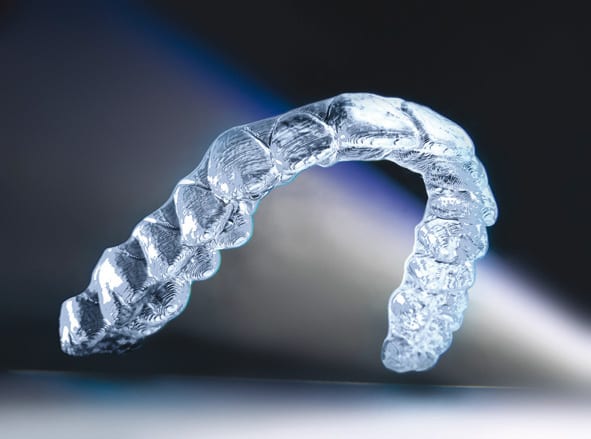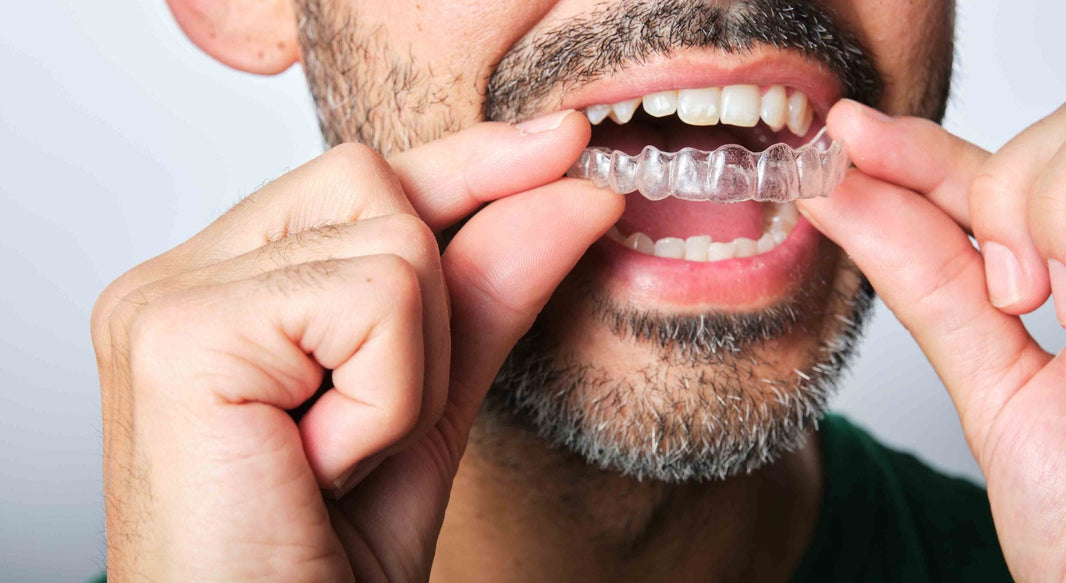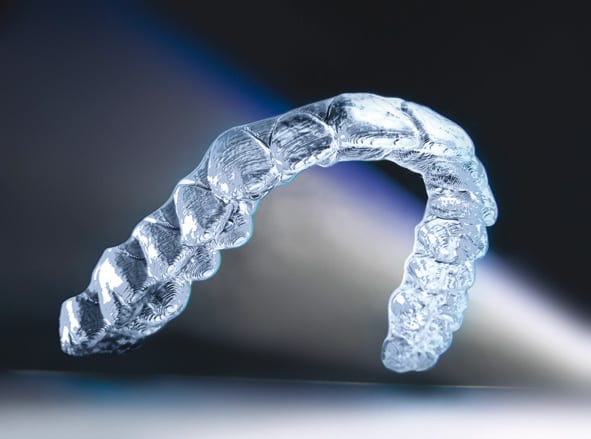Periodontal disease—commonly known as gum disease—affects nearly half of all adults. But did you know that clear aligners like Invisalign treatment can actually improve your periodontal health? Patients with gum disease can benefit from the cleaner, more accessible oral hygiene routine that removable clear aligners support. This guide explores how Invisalign aligners can promote healthier gums, prevent worsening gum disease, and offer key advantages over traditional braces for teeth in periodontal care. Learn why clear aligners are often the superior choice for patients concerned with their long-term oral health.
Table of contents
What Is Periodontal Disease and Why Does It Matter
What is periodontal disease and how does it affect your teeth and gums
Periodontal disease is a broad term for conditions affecting the gums and surrounding bone structure. It ranges from mild gingivitis to severe periodontitis that can cause tooth loss. Common culprits include plaque buildup, gum infection, bone loss, and tartar accumulation. If left untreated, gum disease can impact not only your dental health but also your overall well-being. Straighten teeth effectively while protecting your gums by understanding how aligners teeth treatment can play a role in better oral care.
Common symptoms of periodontal disease include:
Bleeding, swollen, or tender gums
Persistent bad breath
Loose or shifting teeth
Pain or difficulty when chewing
Changes in bite or denture fit
Orthodontic Treatment and Periodontal Disease
Is it safe to straighten teeth if you have gum disease
Yes—but only if your gum disease is under control. Before starting Invisalign treatment or braces for teeth, your orthodontist and dentist will evaluate your periodontal health. Active gum disease must first be treated to prevent further damage during orthodontic movement. Many patients with a history of gum disease successfully undergo clear aligners treatment once their periodontal condition is stable. In fact, Invisalign aligners may even help improve periodontal health by correcting misaligned teeth that contribute to gum stress and difficulty cleaning.

How does orthodontic treatment benefit gum health
Orthodontic treatment improves periodontal health by aligning teeth, making it easier to brush, floss, and remove plaque. Invisalign clear aligners are especially advantageous because they are removable—allowing for optimal cleaning of both teeth and gums throughout treatment. In contrast, fixed metal braces and lingual braces can trap food and plaque, requiring extra diligence to maintain gum health. For patients with prior gum concerns, Invisalign aligners are often recommended over traditional dental braces to support ongoing periodontal care.

Clear Aligners Are Better for Periodontal Health Than Braces
Studies show that Invisalign treatment supports better periodontal outcomes compared to metal braces or ceramic braces. The ability to remove clear aligners makes daily cleaning more effective and reduces plaque buildup, which is critical for patients managing gum disease. Fixed appliances create more challenges in maintaining oral hygiene, increasing the risk of periodontal complications during orthodontic treatment. Align technology offers a significant advantage by giving patients more control over their gum health.
How Invisalign aligners promote gum health during treatment
Invisalign aligners help maintain healthier gums by allowing patients to remove aligners for thorough brushing and flossing. The aligners also contribute to a more uniform bite, reducing excessive pressure on certain teeth and improving chewing function. With straightened teeth, plaque and tartar have fewer places to hide—an essential factor in preventing gum disease recurrence. The combination of improved oral hygiene and better bite alignment makes Invisalign treatment a smart choice for patients concerned about periodontal health.
How Invisalign Clear Aligners Support Long-Term Periodontal Stability
Beyond improving day-to-day oral hygiene, Invisalign aligners also promote long-term periodontal stability. As teeth are gradually aligned, the reduction of crowding and overlaps allows the gums to adapt to a healthier, more uniform contour around each tooth. This improves blood flow to gum tissue and reduces pockets where bacteria can accumulate. Additionally, Invisalign aligners apply gentler, more controlled forces compared to braces, which can lower the risk of inflammation or recession in patients with compromised gum health. For patients with a history of periodontal disease, this more biologically harmonious tooth movement helps safeguard gum integrity during and after treatment.

Tips for Maintaining Periodontal Health During Invisalign Treatment
How to keep gums healthy while wearing Invisalign aligners
Maintaining excellent oral hygiene is essential when undergoing Invisalign treatment—especially for patients managing or at risk for periodontal disease. Since Invisalign aligners are removable, take advantage of this by brushing and flossing after every meal and before reinserting aligners. Clean your Invisalign aligners daily with the Invisalign aligner cleaning system or cleaning crystals Invisalign recommends to prevent bacteria buildup. Your orthodontist will also advise on professional cleanings throughout treatment to ensure optimal gum health.
Best practices for protecting gum health during Invisalign:
- Brush and floss after every meal before wearing aligners
- Clean aligners daily using Invisalign aligner cleaning system
- Attend professional dental cleanings as recommended
- Monitor gums for signs of inflammation or recession
- Stay hydrated to promote healthy saliva flow
How Does Gum Disease Affect Orthodontic Treatment Outcomes
Active gum disease can interfere with tooth movement and compromise orthodontic outcomes. Inflamed gums and bone loss reduce the stability of teeth, making orthodontic adjustments riskier. That’s why orthodontic treatment should only begin once periodontal disease is controlled. Invisalign aligners make it easier to maintain gum health during treatment, supporting healthier, more predictable tooth movement. Working closely with your Invisalign orthodontist and dental team ensures safe and effective treatment even for patients with periodontal concerns.
How gum disease impacts orthodontic treatment:
- Increases risk of tooth mobility during treatment
- Can delay or complicate tooth movement
- Requires close coordination with your periodontist
- Necessitates extra oral hygiene vigilance
How Do I Know If I Am a Candidate for Invisalign Treatment With Periodontal Disease
If you’ve had gum disease or currently manage periodontal health, a full dental evaluation is required before starting Invisalign treatment. Your orthodontist will work closely with your dentist or periodontist to assess bone levels, gum stability, and any underlying issues. Many patients with well-controlled periodontal disease are excellent candidates for Invisalign treatment. Align technology enables precise planning to ensure safe, gradual tooth movement without compromising gum health.
Questions to ask before starting Invisalign if you’ve had gum disease
Before starting Invisalign clear braces in any patient with periodontal history, it’s important to ask your orthodontist key questions. Inquire about your current gum health status, how Invisalign may benefit your periodontal maintenance, and whether your treatment plan will include additional hygiene monitoring. Confirm that your Invisalign provider near me is experienced in managing complex cases like yours. The right approach can make Invisalign treatment a powerful tool for improving both your smile and your gum health.
Key questions to ask your Invisalign orthodontist:
Is my periodontal disease fully under control?
Will my Invisalign treatment plan be coordinated with my periodontist?
How often should I schedule professional cleanings during treatment?
Are Invisalign aligners the best choice for my long-term gum health?
What are the benefits of choosing Invisalign over braces for gum health
Invisalign aligners offer significant periodontal health advantages over fixed braces for teeth. Removable aligners allow for complete access to all tooth surfaces, promoting better daily cleaning. There is also less risk of plaque buildup compared to metal brackets and wires, which can trap food and bacteria. For patients with prior gum disease or ongoing maintenance needs, Invisalign aligners provide a safer and more manageable path to straighter teeth and healthier gums.
Periodontal benefits of Invisalign vs braces:
Easier brushing and flossing without appliance interference
Less risk of food trapping and plaque buildup
Allows for more frequent periodontal monitoring
Reduces strain on already compromised gum tissue
Can Invisalign treat periodontal disease?
Invisalign treatment itself does not cure periodontal disease, but it can play an important role in supporting improved gum health once the disease is under control. Straightening teeth with Invisalign clear aligners helps reduce crowding and overlaps that make it difficult to clean around teeth and gums—factors that can worsen periodontal problems. Invisalign providers often work closely with periodontists to coordinate treatment for patients with gum disease, ensuring that aligner therapy is introduced at the right time to complement periodontal care. By achieving better tooth alignment, Invisalign treatment can reduce plaque retention areas and promote healthier gums long-term.
How can I fix my teeth with periodontal disease?
If you have active periodontal disease, the first step is to stabilize gum health before pursuing orthodontic treatment. Periodontal therapy typically includes scaling to remove tartar and bacteria both above and below the gumline, root planing to smooth root surfaces and discourage bacterial buildup, and possibly the use of antibiotics to reduce infection. Once gum inflammation is under control and bone levels are stable, your dentist or orthodontist may recommend using clear aligners like Invisalign or other treatments to align teeth, which can further improve gum health by making daily hygiene more effective.
What not to do with periodontal disease?
Patients with periodontal disease should avoid behaviors and foods that can exacerbate gum inflammation. Sugary foods feed bacteria and increase plaque buildup, accelerating the progression of gum disease. Acidic foods and beverages can also weaken enamel and irritate gum tissue, creating a more favorable environment for harmful bacteria. Additionally, smoking and poor oral hygiene habits significantly worsen periodontal health. Following a dentist-recommended oral care routine and maintaining regular cleanings is key to managing and stabilizing periodontal disease.
Can you cure gum with Invisalign?
Invisalign treatment does not cure gum disease directly, but it can support better gum health by improving tooth alignment and making it easier to maintain oral hygiene. When teeth are straightened with Invisalign aligners, it becomes simpler to brush and floss effectively, reducing plaque buildup—a key factor in managing and preventing periodontal disease. However, active gum disease must first be treated and stabilized by a dental professional before starting Invisalign. Clear aligners can then be used to complement ongoing periodontal care and help maintain long-term gum health.
Conclusion
For patients with gum disease or a history of periodontal concerns, Invisalign treatment offers a safer, more supportive option for achieving a straighter smile. Clear aligners promote better oral hygiene, reduce the risk of plaque buildup, and allow for more controlled tooth movement—critical advantages for long-term periodontal health. By working with an experienced Invisalign orthodontist and maintaining diligent oral care, you can successfully straighten teeth while supporting healthy gums. If you’re wondering whether Invisalign is right for your periodontal needs, schedule a consultation today to explore your options.






